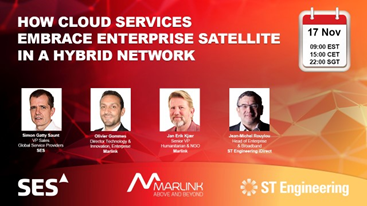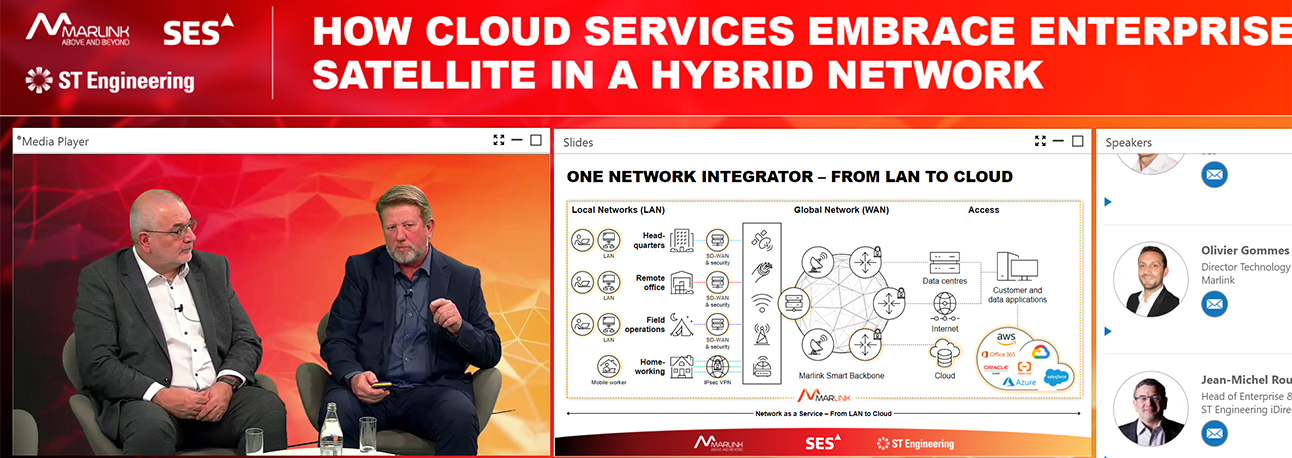By Jean-Michel Rouylou, Head of Enterprise and Broadband
Enterprises all over the world are joining the cloud revolution and moving their vital operations and IT infrastructure to the cloud—a trend that has increased in recent years and that shows no signs of slowing down. This development has major implications for the satellite industry: To keep pace and stay relevant and useful to enterprise clients both present and future, satellite infrastructure needs to migrate to the cloud. By embracing this shift, the satellite industry can create enormous opportunity by improving its technology through scalability and delivering its services in a space where enterprise clients are increasingly operating.
During our recent webinar together with SES and Marlink, we looked at how to enable hybrid cloud offerings to bring satellite closer to enterprises.
Historically, enterprise customers have kept their main operations local. All data was sent back to this one, central location and connectivity was used only for certain applications such as email.
Today’s customer requires so much more than core connectivity. As more companies make the transition from local data centers to the cloud, the need for flexibility and agility is much greater and yet it’s imperative that costs and IT HR efforts are kept low.
It’s against this backdrop that we’re observing a change in the connectivity market. Fully managed networks or, more specifically the ability to provide a managed end-to-end service from a service provider, is becoming the leading way to ensure that enterprises are well-connected, wherever they are in the world.

At ST Engineering iDirect, we want to be fully integrated with terrestrial networks making life easier for our partners such as Marlink and SES to offer hybrid cloud services. It’s for that reason we believe standardization is key to enable our partners to take full advantage of cloud-enabled services. Our aim is to ensure that we set the bar high, ensuring that all the benefits of an integrated, open architecture are available to our service provider customers so that they can in turn offer a fully converged, managed end-to-end service to enterprises.
It’s important that enterprises recognize the introduction of satellite connectivity into a converged end-to-end network has several advantages for service providers. It enables them to fully integrate their ground segment infrastructure with telco terrestrial networks, gaining access to new network services and to new means of generating revenue. In uniting satellite with the wider network, focus can be placed on QoE rather than connectivity QoS and this access to the global telecommunication network offers a host of new opportunities. Not only this, but services can be extended to include value added elements as well.
As the industry’s leading IP-based satellite ground segment provider, we provide the technology, hardware, software and services that enable our service provider customers to optimize their networks, to differentiate their services and to profitably expand their businesses. We want to be fully integrated with terrestrial networks making life easier for our partners such as Marlink and SES to offer hybrid cloud services.
Learn more about how we achieve that by watching the webinar here.
